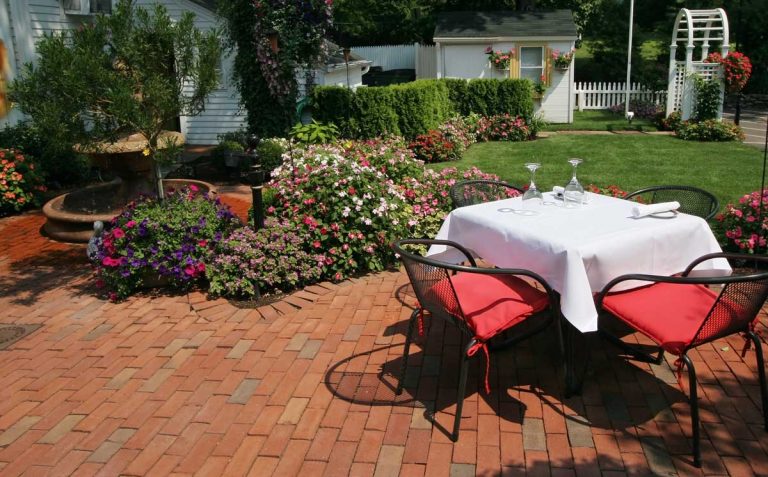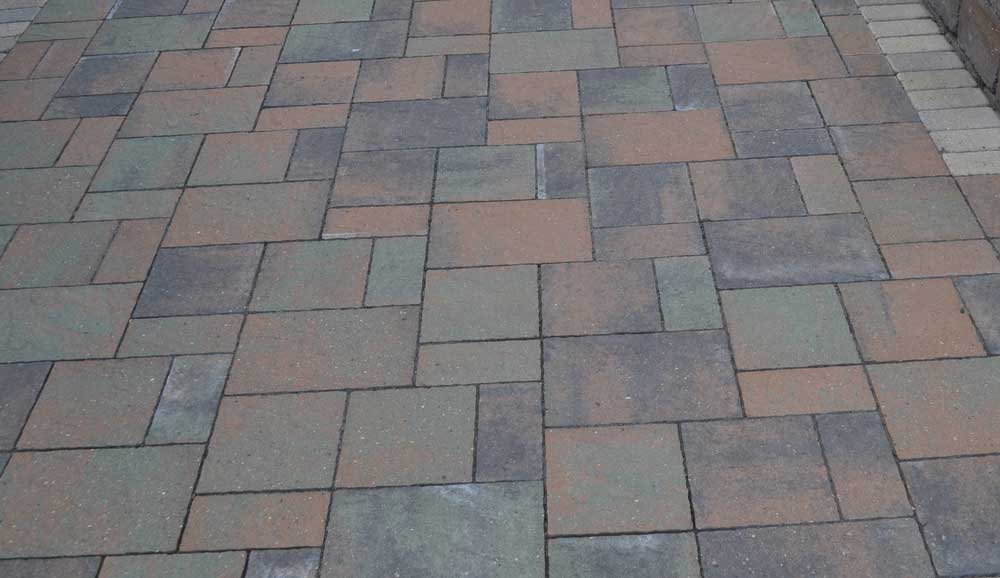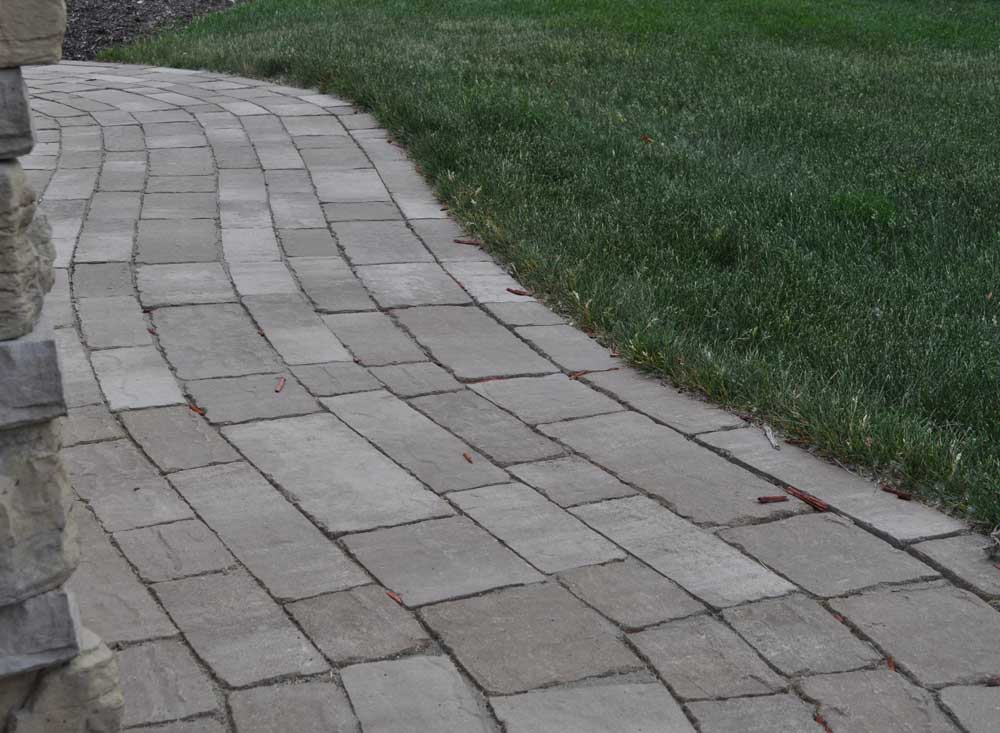Brick vs. Concrete Pavers – Which is Best?

Pavers are individual construction units mostly used for patios, driveways, and walkways. They
come in many materials, with brick and concrete pavers being two of the most common and popular.
While clay bricks can be used for many purposes, those used for pavers tend to be larger and
thicker than those used for other masonry projects. Likewise, while concrete may be used in
patios, walkways, and driveways in many forms, concrete pavers are the only type that come
precast, rather than cast or produced on site.
Both brick and concrete pavers come in several patterns, sizes, shapes, and colors. And both
materials are readily available in most areas. They are very different from one another,
however, in overall looks, maintenance, and how long they may last. Their costs can also vary.
Depending on the area you live in, the style and layout of the project you’re completing, and
your budget, you may find that one may be a better fit than the other.
Brick vs. Concrete Paver Color Options
Both brick and concrete pavers are available in different colors. The number of colors of each
may be limited by the manufacturer. However, the overall appearance of the pavers can vary
wildly between the two materials.
Bricks are made of clay, and can therefore be limited by the minerals in the clay. Most clay
bricks are available in shades of gray, brown, tan, and red.
Because clay is natural, and pigment can vary, your bricks may not be entirely uniform in color,
even if you choose a solid shade. This can lead to some natural variation in the pavers.
In addition, when the bricks are fired, patterns and effects can be added to them. These include
flares, flashes, and sunspots, which can add speckles, darkened edges, or dark or light splashes
of color on the brick.
This will also vary from brick to brick and add interest and depth to a walkway. Keep in mind that as brick ages, the surface tends to become smoother over time, which may make the pavers slick when wet.

On the other hand, concrete is a naturally light-colored material that has a uniform gray color. It can be stained in many other shades, however, including different shades of gray, brown, or red. Depending on how it was stained, concrete pavers can be one solid color, or they may vary from piece to piece and within one piece.
While brick that has been flashed may have varying colors, this is random, produced by the kiln.
When concrete has varying colors, this can be random or done deliberately. Often, therefore,
concrete has a more consistent appearance than bricks.
One thing to note is that the color of solid clay goes all the way through. When you color
concrete, you are only staining the surface, so while bricks that wear do not lose color over
time, colored concrete may lose color and fade as it ages.
The Durability of Bricks vs. Concrete Pavers
When analyzing the durability of brick and concrete pavers, it comes down to the strength of the
pieces, the water absorption rate of the pavers you choose, your climate, and how well they
maintain their appearance. Clay brick can retain its color longer and may not fade when exposed
to UV rays.
This is a very important feature when considering resale value down the line. Concrete pavers
may achieve the same sustainability, but only when properly maintained and sealed every 3-4
years.
Both types of pavers are strong and designed for years of use. While the average rating for most
patios and walkways is only 3,000 to 4,000 psi, concrete pavers typically have strengths between
6,500 and 8,000 psi, while bricks range from 8,000 psi to 12,500 psi.
While bricks are stronger, for the average patio or walkway, both surpass the minimum
compressive strength needed.
Brick and concrete paver manufacturers can vary in their formulas. Therefore, both materials can
have a range of durability and water absorption.
In order to avoid cracking in freeze/thaw cycles, the water absorption rate of the paver you
choose needs to be ideally no more than 5%. The average concrete paver has a water absorption
rate of 10% to 15%, while the average brick is around 6%. Both materials, however, can come in
ultra-dense varieties with lower water absorption rates.
It is easier to find bricks that can survive the freeze/thaw cycle than it is to find concrete
pavers, but both do exist. To prevent cracking, make sure you check for the absorption rate on
the paver you choose.
Bricks may also have a unique issue known as spalling. This is more common with thinner brick
veneers than it is with pavers, but it is an issue that does not impact concrete. In this case,
if the pore sizes in the brick are too small, the brick may crumble.
Keep in mind, however, that reclaimed brick pavers are available that are more than 100 years
old; brick is a very durable material that can last for centuries. Concrete can last for decades
when well maintained, but bricks have a longer track record.
Style and Design Options

Both bricks and concrete pavers are available in several different shapes, which can give you different patterns and layout possibilities. However, brick is most commonly found in a rectangular shape, with dimensions measuring from 1″ x 8″ to 6″ x 12″ and anywhere in between.
However, if you choose to special order them, you can get bricks in different shapes as well,
such as hexagons, squares, and triangles.
Concrete, however, is readily available in all of these shapes and sizes and more.
While bricks may need to be ordered in different shapes, concrete is usually easier to find. In
addition, concrete is often sold bundled in different shapes and sizes that are designed to be
used in a repeating pattern.
Brick is not typically bundled and sold this way; if you want a repeating pattern on your patio,
concrete will likely be easier to find and use in this way. To get bricks for a pattern of this
type, they would need to be custom ordered.
Comparing the Cost of Brick and Concrete Pavers
There are high-quality and low-quality versions of both concrete and brick pavers. Average
concrete patio pavers can range from $6/sq ft to $15/sq ft.
On the other hand, bricks are significantly more expensive at $10/sq ft all the way up to $50 sq
ft. A brick project will typically cost 15% to 20% more than concrete pavers of the equivalent
quality.
Learn more about how much it costs to install a patio.
Maintenance Matters
Of the two materials, brick is significantly less maintenance than concrete pavers. Concrete can
stain easily, and is more likely to develop cracks in freeze/thaw areas because of its higher
water absorption rates.
Sealing a concrete paver patio makes it significantly easier to maintain – but at the same time,
that sealing process itself is required maintenance. Sealing impedes water absorption and
stains, but does not completely prevent them.
The pavers should still be cleaned regularly to help remove surface dirt that may eventually
stain. A brick paver patio is essentially a “set it and forget it” home feature, although
general cleaning and weed maintenance is a good idea to prolong the life of your investment.
Brick and concrete pavers will both last for several years after initial installation. Bricks do
have a longer lifespan than concrete, but both will easily last as long as you own the home.
Concrete may be slightly higher maintenance, but can give you more options for layouts, as well as more affordability. Make sure to consider these attributes, along with their general appearance and the climate you live in when choosing the right paver for your paver installation.